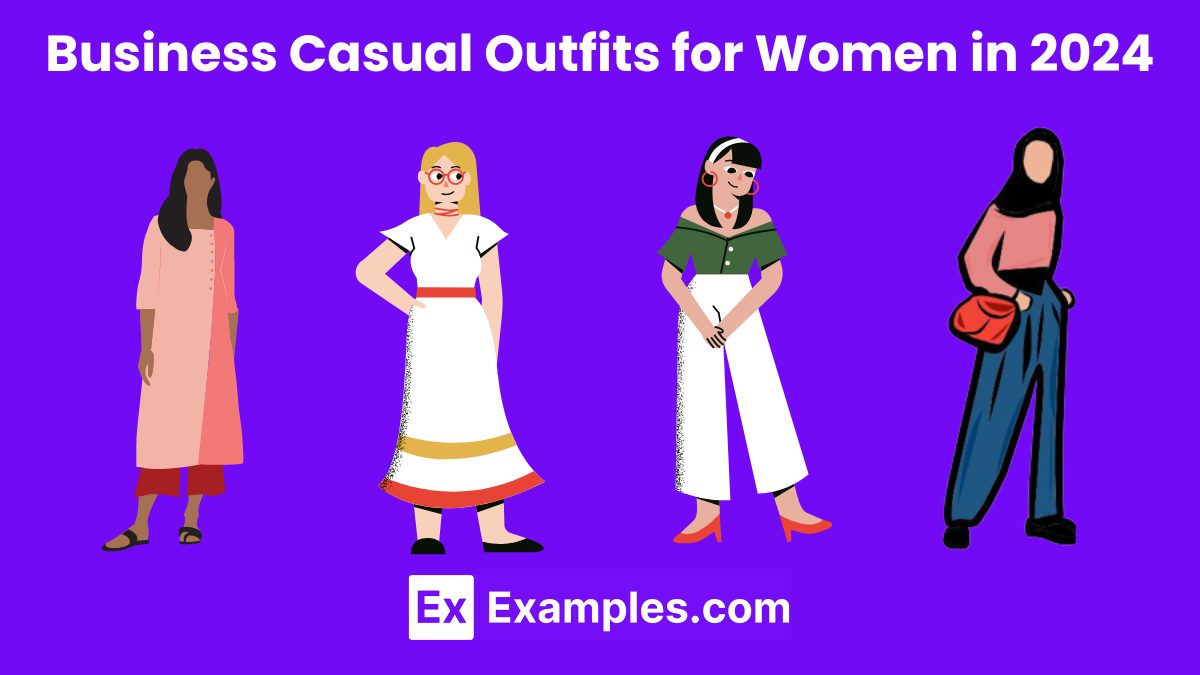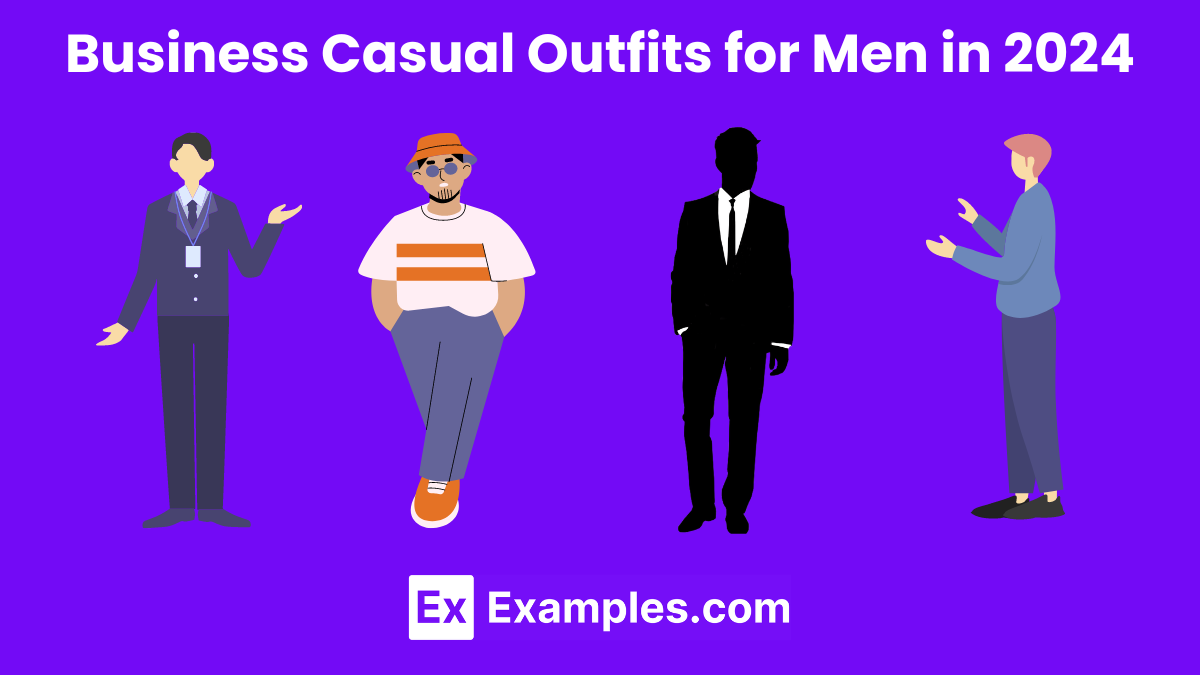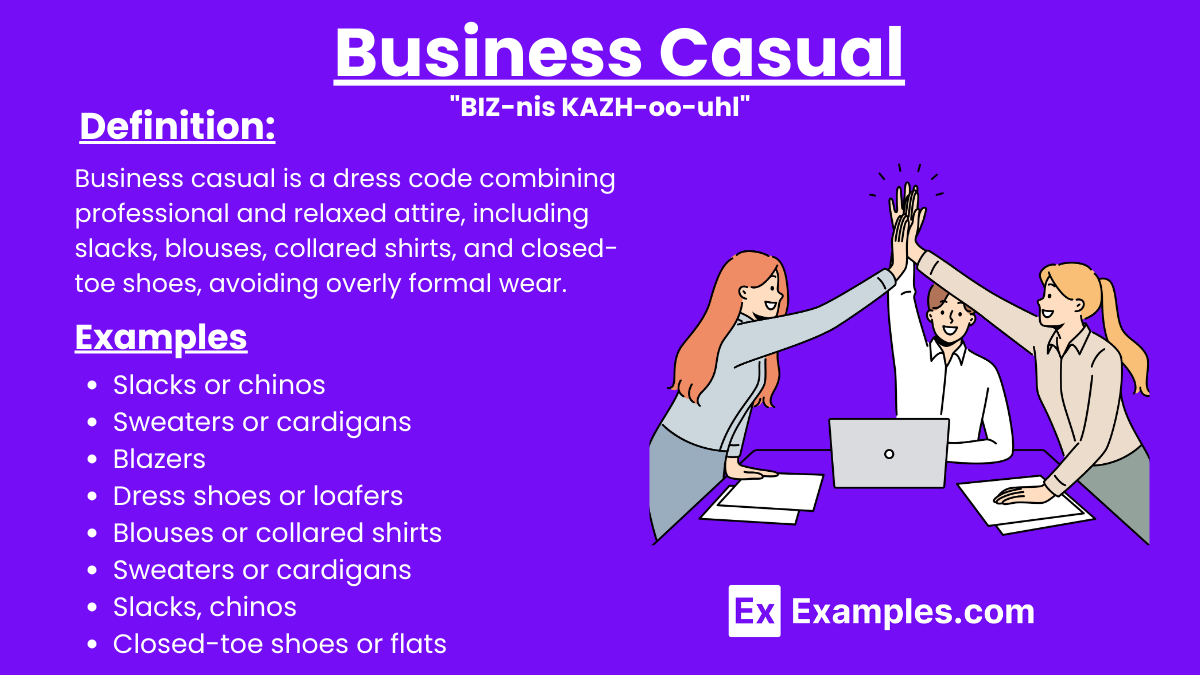Business Casual – Meaning, Defination, & Examples
Business casual is a popular dress code policy in many modern workplaces, striking a balance between professional attire and comfortable clothing. It allows for a more relaxed yet polished look, promoting a casual communication style among employees. Typical business casual outfits include slacks, khakis, collared shirts, blouses, and closed-toe shoes. This dress code encourages productivity and fosters a positive work environment, making it a preferred choice for many companies.
What Is Business Casual?
Business casual is a dress code that blends professional and relaxed attire. It includes items like slacks, khakis, collared shirts, blouses, and closed-toe shoes, avoiding overly formal wear such as suits and ties. This style promotes comfort while maintaining a polished, professional appearance suitable for modern workplaces.
Examples of appropriate clothes for business casual include
– Slacks or khakis
– Collared shirts (e.g., button-downs, polos)
– Blouses
– Sweaters or cardigans
– Blazers
– Dress shoes or loafers
– Dresses or skirts at knee-length
– Closed-toe shoes
– Belted trousers
– Neatly pressed chinos
Business Casual vs. Business Professional
| Category | Business Casual | Business Professional |
|---|---|---|
| Tops | Collared shirts, blouses, sweaters | Suits, blazers with dress shirts or blouses |
| Bottoms | Slacks, khakis, chinos, skirts | Dress pants, pencil skirts |
| Footwear | Dress shoes, loafers, flats | Dress shoes, heels |
| Outerwear | Cardigans, light blazers | Formal blazers, suit jackets |
| Accessories | Simple belts, minimal jewelry | Ties, cufflinks, formal watches |
| Overall Look | Comfortable, polished, semi-formal | Structured, formal, professional |
| Occasions | Daily office wear, casual meetings | Important meetings, presentations, formal events |
How to Figure Out What Business Casual Looks Like at Your Company
Observe Your Colleagues : Look at what your colleagues are wearing. Notice the common attire choices and styles. Pay attention to how they balance comfort with professionalism, which can give you a clear idea of the accepted business casual standard in your workplace.
Review the Dress Code Policy : Consult your company’s dress code policy. This document often provides specific guidelines and examples of acceptable business casual attire. Understanding these rules will help you dress appropriately and avoid any fashion faux pas at work.
Ask for Guidance : Don’t hesitate to ask your supervisor or HR department for clarification on business casual attire. They can provide specific recommendations and help you understand what is considered appropriate, ensuring you adhere to company standards.
Start Conservative, Adjust Gradually : Begin with more conservative business casual outfits. Over time, adjust your wardrobe based on your observations and feedback. This approach allows you to fit in while gradually finding your personal style within the company’s dress code.
How Has Business Casual Changed in the Last Few Years?
Business casual has evolved significantly in recent years, reflecting broader shifts in workplace culture and fashion trends.
Increased Flexibility : There is now greater flexibility in what is considered acceptable business casual attire. Jeans, once deemed too casual, are now often allowed as long as they are clean and free of rips. This shift reflects a broader trend toward comfort and individuality in the workplace.
Emphasis on Comfort : Comfort has become a priority in business casual fashion. With the rise of remote work and hybrid models, employees are choosing softer fabrics and more relaxed fits. Items like knitwear and athleisure-inspired pieces are now common, blending professionalism with comfort.
Sustainability and Ethics : Sustainability and ethical fashion are influencing business casual choices. Many companies and employees prefer eco-friendly and ethically produced clothing. This trend emphasizes quality over quantity, with a focus on timeless pieces that are both stylish and environmentally responsible.
Tech Influence : Tech industry trends have impacted business casual norms across various sectors. The tech world’s laid-back approach, including hoodies and sneakers, has inspired other industries to adopt a more relaxed, yet still professional, dress code. This influence promotes a modern, versatile wardrobe.
Cultural Inclusivity : Cultural inclusivity in fashion has led to a broader acceptance of diverse styles and cultural attire within business casual guidelines. Traditional garments and accessories are increasingly recognized and respected, promoting a more inclusive and diverse workplace environment.
Business Casual Outfits for Women in 2024

Business Casual Outfits for Men in 2024

What Should You Avoid Wearing for Business Casual in 2024?
- Overly casual attire (e.g., graphic T-shirts, flip-flops, ripped jeans)
- Athletic wear (e.g., gym shorts, leggings, sweatpants)
- Revealing clothing (e.g., low-cut tops, short skirts, tight outfits)
- Unkempt appearance (e.g., wrinkled or stained clothes)
- Excessive accessories (e.g., overly large or flashy jewelry)
Can I wear jeans for business casual?
Yes, if they are clean, free of rips, and paired with a more polished top like a blouse or blazer.
Are sneakers acceptable in a business casual environment?
In some workplaces, clean and stylish sneakers are acceptable, but it’s best to check your company’s specific policy.
Can women wear dresses for business casual?
Yes, dresses are appropriate if they are knee-length or longer and not overly revealing.
Is it okay to wear a T-shirt in a business casual setting?
Avoid graphic T-shirts; instead, opt for plain or subtle patterned T-shirts that can be layered with a blazer or cardigan.
What types of shoes are considered business casual?
Closed-toe shoes like loafers, dress shoes, ballet flats, and low heels are suitable for business casual.
Are shorts ever appropriate for business casual?
Typically, shorts are not considered appropriate for business casual attire.
Can I wear leggings in a business casual outfit?
Leggings are generally too casual for business casual attire unless worn under a long tunic or dress.
What kind of outerwear is appropriate for business casual?
Blazers, cardigans, and light jackets are appropriate for business casual settings.
Are polo shirts acceptable for business casual?
Yes, polo shirts are a staple of business casual attire for both men and women.
Is it okay to wear bright colors in a business casual outfit?
Yes, but it’s best to balance bright colors with neutral pieces to maintain a professional appearance.


